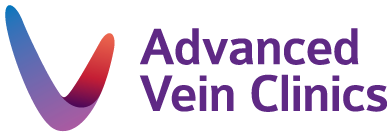What are Varicose Veins?
Varicose Veins are abnormal, dilated blood vessels caused by a weakening in the vessel wall. They usually develop in the legs and can be seen through the skin.
They may appear as swollen, twisted clusters of blue or purple veins and usually develop in the legs.
Most Varicose Veins develop near the surface of the skin. Deeper Varicose Veins may cause the skin above them to swell, becoming darker or hard.
What are Spider Veins?
Sometimes Varicose Veins are surrounded by thin red capillaries known as Spider Veins (group of small blood vessels located close to the surface of the skin).
Spider and varicose veins can appear anywhere, but most often appear on the legs and in the pelvic area.



Who gets Spider Veins and Varicose Veins?
Between 30% and 60% of the adult population are affect by Varicose Veins. It is common that the condition is seen in many members of the same family. While it is more common in women, many men are also affected.
What is Chronic Venous Insufficiency (CVI)
Long-term and untreated varicose veins can result in more advanced vein disease of the legs known as chronic venous insufficiency (CVI).
Are Varicose Veins and CVI dangerous?
Varicose veins and CVI can be harmful to your health because they may be associated with the development of:
- Blood clots that form in the swollen vein (known as Thrombosis).
- A painful inflammation of the vein (known as Phlebitis) which can recur without treatment. This often follows the formation of blood clots (known as Thrombophlebitis).
- Ulcers (open sores on the skin) that result when the enlarged vein does not provide enough drainage of fluid from the skin.
CVI slows down the drainage of blood from the legs and is one cause for the build-up of fluid or swelling of the legs (known as Oedema). This can lead to complications including delayed wound healing and increased risk of skin infection (known as cellulitis).
Occasionally advanced varicose veins can spontaneously bleed after little or no direct injury (localised knock or trauma).
Symptoms of Chronic Venous Insufficiency
Varicose Veins are not always obvious. You may have Varicose Veins if you have ANY of the following symptoms :
- Swollen legs
- Muscle cramps, soreness or aching in the legs often called “Restless Legs”
- Tiredness, burning, throbbing, tingling or heaviness in the legs
- Soreness behind the knee
- Itching around the vein
- Swelling of the lower legs as excess fluid pools under the skin
- Brown discolouration of the skin, especially around the ankles
- Leg Ulcers
What should I do now?
If you think you have Spider Veins or Varicose Veins, please call us on 1300 834 625 to arrange an appointment.
How are varicose veins diagnosed?
During a physical exam, the doctor will check your legs while you are standing. Your doctor also may request that you have a Doppler scan, an ultrasound exam to check the blood flow in the veins near the skin’s surface (called superficial) and deep veins

Do all Varicose Veins need treatment?
The goals of treatment are to reduce symptoms and prevent complications. Since not all varicose and spider veins require medical treatment, the goal of treatment may be simply to improve the appearance of the affected areas.
Conservative options (non surgical)
The most conservative approach for treating varicose veins is to wear properly fitting support hose (also called compression stockings), especially when the veins are asymptomatic.
These stockings can generally be purchased at any surgical supply store and come in various styles including below-the-knee, above-the-knee and pantyhose styles. They also come in varying compressions and should be prescribed by your doctor.
Other conservative treatment approaches include:
- Practising good skin hygiene
- Losing weight if you are overweight
- Exercising regularly (especially walking)
- Avoiding prolonged periods of sitting or standing
- Elevating your legs while sitting and sleeping.
- Herbal tonic may improve symptoms for patients with minor disease
When you need to stand for long periods of time, take frequent breaks to sit down and elevate your feet. If conservative treatment does not achieve satisfactory relief of symptoms, or if the appearance of the veins is bothersome, other treatments may be offered, depending on your overall medical condition.
These treatments will provide improvement in your symptoms or slow the progression of your condition.
